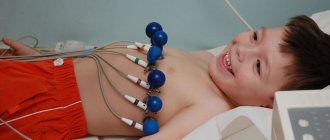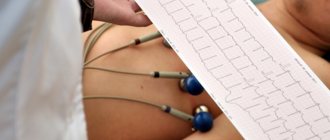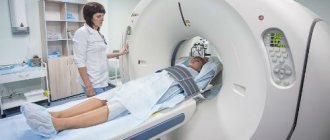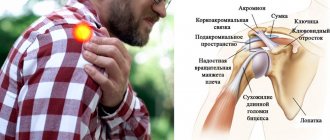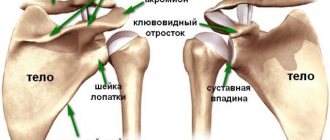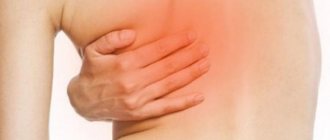A burning sensation in the chest is a clinical manifestation of a number of pathological conditions. The rib cage (or, as it is also called, the chest) is a part of the body that contains the entire chest cavity and the upper component of the peritoneum. They are a “receptacle” for vital human organs. Discomfort in them often signals the presence of pathologies of the heart, liver, gastrointestinal tract or lungs.
You can get rid of this symptom forever only by identifying its initiating factor. To do this, you need to seek professional advice. The specialist with whom you make an appointment will conduct an examination and prescribe appropriate diagnostic tests, thanks to which it will be possible to accurately diagnose, determine a treatment strategy and begin to implement it.
Where to go if you have a burning sensation in your chest?
Are you a resident or guest of the capital and are you faced with a similar problem? Contact CELT. Our clinic is multidisciplinary and has departments of various specializations. You can make an appointment with a cardiologist, therapist, neurologist or gastroenterologist and get the help you need.
Our diagnostic department offers ample opportunities for correct diagnosis and identification of pathological conditions in the initial stages of development. Our staff is staffed with highly qualified specialists: doctors of the highest category, candidates and doctors of science with decades of medical practice behind them.
You can find out our prices by going to the “Services and Prices” tab in this section. To avoid misunderstandings, we recommend that you check the numbers with our operators by calling the number.
Reason 3. Intervertebral hernia
Intervertebral hernia is the “squeezing out” of the nucleus pulposus by neighboring vertebrae. The nucleus pulposus is a kind of hinge that is located in the center between the vertebrae and ensures their mobility. Therefore we can bend in all directions. But this structure is semi-liquid, and with increased or sudden physical activity it can “crawl” beyond the intervertebral space, forming a hernia.
The pain is acute, pronounced, and sharply intensifies with exercise. May be accompanied by impaired sensitivity in the arms and legs, numbness and pain in the extremities, and radiate to the buttock.
An intervertebral hernia can be diagnosed by an orthopedist, neurologist, neurosurgeon, or vertebrologist.
Physiological causes of burning in the chest
Experts identify a number of initiating factors for such a phenomenon as a burning sensation in the chest. The most common of these is poor diet, including fatty, spicy, salty foods, carbonated water and fast food, along with frequent overeating or eating food before bed.
The above leads to the contents of the stomach entering the esophagus, where it irritates the mucous membrane, which causes discomfort. They are accompanied by nausea, heartburn and belching, as well as bloating. In order to exclude this, it is enough to change your diet by minimizing the above-mentioned foods, optimizing portion sizes and eliminating the consumption of food before bedtime.
The same can be said about excessive consumption of coffee and alcoholic beverages, as well as smoking. All of them can cause a burning sensation in the chest, which will stop as soon as their consumption is reduced to a reasonable limit. It is important to understand that it is not the norm and its appearance is a reason to visit a doctor.
A number of reasons are associated with diseases of the cardiovascular system, characterized by the inability of blood vessels to provide the heart with a sufficient volume of oxygen. This occurs with ischemia, which is manifested by a local decrease in blood supply due to narrowing or blockage of the arteries, due to which the most important organ of the human body suffers.
Do not forget about neurological factors, when a burning sensation occurs due to compression or damage to the nerve ending or in stressful situations, with neuropsychiatric disorders. In addition, it can be caused by pathological conditions characterized by damage to the bronchial mucosa or trachea.
Angina pectoris
Attacks of angina pectoris occur first during exercise or stress (this is called angina pectoris), and then at rest (rest angina pectoris). In typical cases, the pain is squeezing or pressing in nature and manifests itself either in the upper part of the sternum or to the left of it. Pain can radiate to the left arm, the left half of the face and neck, to the lower jaw, left ear, to the left shoulder blade, sometimes to the right shoulder or both shoulders and both arms, and the back. Sometimes the pain spreads to the left side of the abdomen and lower back, and to the legs. The onset of pain is rarely sudden; usually the pain is of an increasing nature, lasts for several minutes, then disappears. This pain is different in that it can be relieved with nitroglycerin, a drug that relieves spasm of the coronary arteries (which supply blood to the heart muscle).
If such pain occurs at least once, the patient should consult a doctor, get examined and clearly know what to do during an attack. During an attack of angina, you need to:
- take a nitroglycerin tablet (under the tongue);
- lie down, open a window or window;
- if after 2 minutes the pain has not decreased, then take another nitroglycerin tablet and call an ambulance. Nitroglycerin begins to act within 1-2 minutes, its vasodilating effect lasts 20-30 minutes. Remember: neither Corvalol nor validol will help with angina - only nitroglycerin!
Diseases that cause burning in the chest
Only a doctor who has everything necessary for diagnosis can identify the cause of a burning sensation in the chest in the middle, right or left. You should not engage in self-diagnosis, as it is fraught with the risk of complications.
| Diseases | Triggering factors |
| Hearts | Sharp pain and burning in the chest near the heart may be a sign of a serious condition that requires immediate medical attention. This occurs with the following diseases:
|
| Liver | Experts identify a number of diseases of the liver and biliary tract, the symptoms of which are manifested by a burning sensation in the sternum. These include:
Other clinical manifestations of the above diseases are as follows:
|
| Gastrointestinal tract | A phenomenon such as heartburn always leads to a burning sensation and pain symptoms due to irritation of the walls of the esophagus by gastric juice. As for diseases, one of the symptoms of which is a burning sensation in the chest, they are as follows:
|
| Intercostal neuralgia | It is a pain syndrome that develops as a result of damage to the intercostal nerves due to various reasons, ranging from compression to infection or intoxication. This syndrome is a sign that the patient has diseases of the organs of the chest wall, mediastinum, and spinal cord. Clinical manifestations are as follows:
|
| Pneumonia | Acute inflammatory infectious lesion of the lungs, which can be lobar or focal. Symptoms of the first include a cough, a sharp increase in temperature, burning and pain in the sternum, and weakness. As for the second, its onset is hardly noticeable; it appears after acute respiratory diseases. Clinical manifestations in addition to pain on inspiration, shortness of breath, cyanosis, wet cough. |
| Scoliosis | Persistent sideways curvature of the spinal column relative to its axis. A burning sensation in the chest occurs due to the fact that with this disease, abrasion of the intervertebral discs and compression of the nerve endings occurs, which provokes serious discomfort. |
| Intercostal myositis | Inflammatory processes of skeletal muscles located between the ribs. On palpation, pain symptoms appear along the entire intercostal space. Experts identify three pain points: the spinal column, the sternum and its lateral surface. In addition, there is swelling of the affected part, redness or, conversely, paleness of the skin, sore throat, cough and headache. |
Treatment options
The attending physician prescribes therapy after analyzing the research results and making a correct diagnosis.
For severe neuralgic pain, the following groups of drugs are prescribed:
- non-steroidal anti-inflammatory drugs - Diclofenac, Nimesil, Movalis (gels - for topical use, powder - for the preparation of oral solution);
- diuretics - to relieve edema (Furosemide, Hydrochlorothiazide, Spironolactone);
- reduction of muscle spasm – “Mydocalm”;
- improvement of metabolic processes - B vitamins (“Neurorubin”).
For cardialgia (angina or heart attack), the following treatment tactics are used:
- vasodilators: “Nitroglycerin” – one tablet under the tongue;
- antiplatelet drugs (lowering blood viscosity): Acetylsalicylic acid, Clopidogrel, Ticagrelor;
- oxygen therapy.
In case of a heart attack, anticoagulant agents are used (Heparin, Enoxaparin). Restore blood flow through the damaged area using percutaneous coronary intervention (stent placement).
For pain of other origin, depending on the diagnosis, the following treatment regimen is used:
- acute bronchitis or tracheitis - antipyretic and antitussive drugs, inhalations with antiseptic solutions. If necessary, antibacterial therapy;
- dissecting aortic aneurysm - urgent surgical intervention;
- diseases of the esophagus – antisecretory drugs (“Ranitidine”, “Pantoprozol”); ruptures, diverticula and hernias require surgical treatment.
For patients whose back pain radiates to the heart, nonspecific therapy is started after excluding acute myocardial ischemia, aortic dissection, or esophageal rupture.
Which doctor should I contact if I have a burning sensation in my chest?
Regular repetitions of this symptom are a reason to contact a therapist. He will conduct an examination, collect anamnesis, ask questions that interest him - and either prescribe treatment or refer him to:
- gastroenterologist - if gastrointestinal diseases are suspected;
- orthopedist - if osteochondrosis is suspected;
- neurologist - if osteochondrosis is suspected;
- cardiologist - if you suspect diseases of the cardiovascular system.
They, in turn, will prescribe diagnostic tests to make an accurate diagnosis.
Reason 2. Degenerative-dystrophic diseases
Caused by wear and tear of the intervertebral discs, brittle bones, and loss of elasticity of spinal tissue. Moreover, such changes are not necessarily age-related. Today, young people also suffer from arthritis, spondylosis, and osteochondrosis.
Over time, pathological processes in the spine become degenerative, i.e. irreversible. In this case, it is necessary to use surgical treatment methods - joint replacement, surgical restoration of vertebrae and other structures. Arthrosis, osteoporosis, and radiculitis often develop into a degenerative form.
Of course, such changes do not occur without symptoms. Often patients note lumbago, acute pain in the affected area, limited mobility, stabbing pain, crunching, pain with certain movements (for example, in the lower back when bending forward). As a rule, a person can clearly determine exactly where it hurts.
Treatment of degenerative-dystrophic diseases is carried out by a rheumatologist, osteopath, chiropractor, traumatologist, neurologist and a number of other specialists. Don't know who to contact? Make an appointment with a general practitioner first.
How is the diagnosis done?
In order to diagnose a symptom, the doctor only needs to conduct a survey and hear the patient’s complaints. The disease causing it can be diagnosed by conducting comprehensive studies. First of all, the patient is examined and a medical history is collected, after which laboratory tests of blood and urine, a detailed blood test, and determination of hormonal levels are prescribed. In addition, hardware tests are prescribed, the selection of which is based on preliminary studies. It could be:
- X-ray of the sternum;
- Ultrasound scanning of the internal organs of the chest cavity;
- Electrocardiography;
- Gastroenterological studies.
conclusions
The appearance of pain localized in the sternum is caused by pathologies of the heart and structures located behind the pericardium. Determining the underlying cause by detailing the pain syndrome (character, intensity, irradiation and connection with breathing, physical activity and food intake) helps to choose further diagnostic tactics.
More often, pain of such localization is characteristic of myocardial ischemia or damage to nerve fibers. Patients who have aching heart or back are prescribed instrumental and laboratory procedures that confirm a certain diagnosis, after which adequate therapy is selected, aimed at eliminating both the symptom and the cause of the pain.
Preventive actions
In order to prevent the development of this unpleasant symptom, you need to take a number of measures:
- Treat inflammatory processes in a timely and correct manner;
- Eat right, minimize the consumption of salty, spicy, excessively fatty foods;
- To live an active lifestyle;
- Avoid stressful situations;
- Follow a daily routine, set aside enough time for sleep;
- Regularly undergo preventive examinations.
Don't forget: a burning sensation in the sternum can be a sign of serious illness. Its occurrence is a reason to seek professional medical help!
Make an appointment through the application or by calling +7 +7 We work every day:
- Monday—Friday: 8.00—20.00
- Saturday: 8.00–18.00
- Sunday is a day off
The nearest metro and MCC stations to the clinic:
- Highway of Enthusiasts or Perovo
- Partisan
- Enthusiast Highway
Driving directions
Reason 7. Spinal tumors
These are cystic formations and cancerous tumors.
A cyst is a bubble with blood. It appears as a result of various types of hemorrhages in the spine. The cyst is characterized by constant severe pain, which can only be relieved with the help of painkillers. Numbness and tingling in the extremities can also be symptoms of a cyst.
Cancer can be primary or secondary. Primary is cancer that has formed in the spinal column, secondary is metastases, that is, secondary tumors that form in late stages in all organs. With malignant tumors, pain may be accompanied by muscle weakness and loss of sensitivity in certain areas.
Neoplasms in the spine are studied by a vertebrologist, oncologist, and neurosurgeon.
